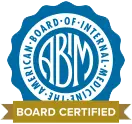Expert Thyroid RFA Care No Scars - Just Results
Expert care for Thyroid RFA. Simplify your health journey with a blend of modern medicine and holistic practices, all designed to support lasting wellness.

Shrink Thyroid Nodules. Save Your Thyroid.
Thyroid Radiofrequency Ablation (RFA) is a minimally invasive, thyroid-sparing treatment for benign nodules—typically done under local anesthesia, with no surgical incision and little downtime.
Fast recovery
Most patients resume regular activity within 24-48 hours.
Thyroid-sparing
Targets the nodule while preserving healthy thyroid tissue.
No surgical scar
A tiny probe under ultrasound guidance—no neck incision.
Local anesthesia
Usually performed safely with local numbing; no general anesthesia.
Why patients choose RFA
RFA focuses energy only where it’s needed—the nodule—so you keep the healthy thyroid that balances your hormones. That’s a smart upgrade over traditional approaches for many benign nodules.
Minimally invasive
Outpatient procedure with a micro-entry point and ultrasound guidance.
Rapid symptom relief
Reduces pressure, visible bulge, and swallowing discomfort as the nodule shrinks.
Lower hypothyroid risk
Preserves functioning thyroid tissue compared to partial/total surgery.
Cosmetic advantage
No neck incision means no surgical scar.
Repeatable if needed
If a large nodule needs more shrinkage, RFA can be repeated.
Keeps options open
If RFA isn’t enough, surgery and other treatments remain available.
RFA vs. other treatments
RFA is a minimally invasive procedure that shrinks thyroid nodules without surgery, scars, or long recovery time, allowing most patients to return to normal activities the next day.
| Treatment | Anesthesia | Incision | Recovery | Scar | Hypothyroid Risk | Voice Nerve Risk | Return to Work |
|---|---|---|---|---|---|---|---|
| RFA (Radiofrequency Ablation) | Local (awake) | No surgical incision | 1-2 days typical | None | Lower risk vs. surgery | Low risk with ultrasound guidance | Usually next day |
| Surgery (Partial/Total Thyroidectomy) | General anesthesia | Neck incision | 1-2 weeks | Visible scar | Common after total/partial removal | Low but present (operative risk) | About 1-2 weeks |
Effectiveness: Many patients see substantial nodule shrinkage over time (commonly >50% by 6-12 months), with eased pressure and improved appearance. Very large or complex nodules may require staged or repeat RFA.
How RFA works
STEP 1
Map the nodule with ultrasound
Comfort measures (cooling, numbing, gentle technique) keep you at ease. The entire visit typically takes about an hour.
STEP 2
Numb the skin and track the needle
Comfort measures (cooling, numbing, gentle technique) keep you at ease. The entire visit typically takes about an hour.
STEP 3
Apply controlled energy to shrink the nodule
Comfort measures (cooling, numbing, gentle technique) keep you at ease. The entire visit typically takes about an hour.
Is RFA right for me?
- Benign nodule confirmed by biopsy
- Bulge in the neck or swallowing pressure
- Cosmetic concerns from a visible lump
- Prefer to avoid general anesthesia and a surgical scar
- Autonomous (overactive) nodules may be eligible
- Multinodular goiter can be considered case-by-case
- Anticoagulants and devices are reviewed for safety
- Your clinician personalizes risks/benefits for you
Expert Nodule Treatment, Made Accessible.
Get relief from thyroid nodules with quick, non-surgical RFA and the trusted, personalized care of DTHTC.

Quick Appointments
Timely access to the care you need.

Responsive Support
No long waits or frustrating
phone hold times.

Holistic, Modern Care
A balanced approach to reduce reliance on medications and help you feel your best every day.



